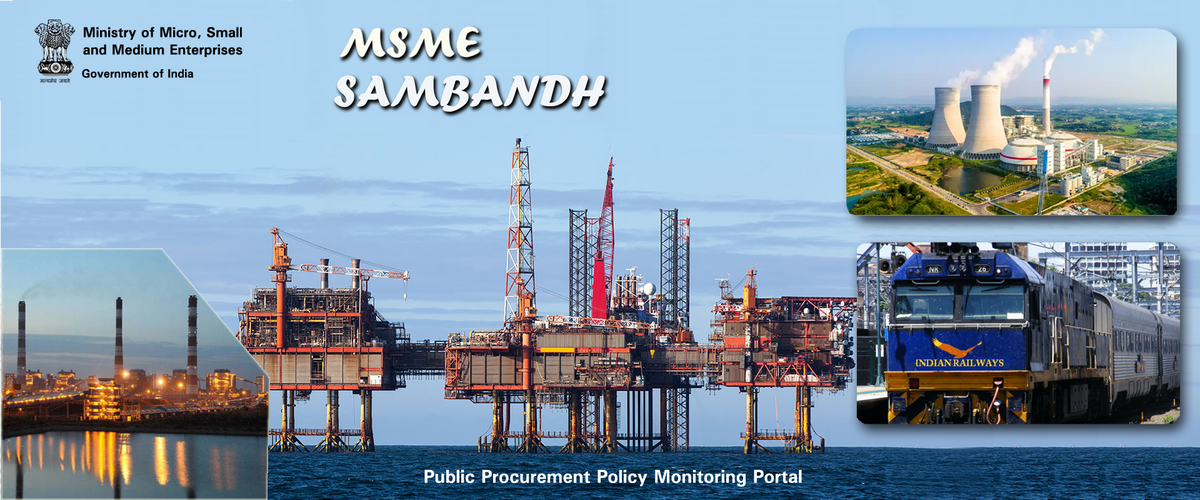Maximizing Efficiency and Profitability: MSME Sambandh in Action

Enterprises in India have seen rapid growth, especially post-Covid-19, coinciding with an increased annual budget for MSMEs. As a result, to promote entrepreneurship, MSME has launched several portals that assist small business owners. MSME Sambandh is one such portal that is discussed in this article. The Sambandh Portal Public Procurement Portal’s main objective is to monitor the implementation of Public Procurement.
What is MSME?
MSME, which stands for the Ministry of Micro, Small, and Medium Enterprises, is an Indian government agency responsible for formulating and implementing regulations for micro, small, and medium-sized businesses. It was established in 1999 and was granted one of the highest budget allocations in the country.
It also develops financial information services for the government and provides policy advice on SSI development and promotion. The regional offices also act as essential bridges between the state and federal administrations.
Have you heard of MSME Sambandh? If you thought it was a scheme for SMEs, you'd be mistaken.
MSME Sambandh is a government of India effort that monitors if its departments and ministries are following public procurement policy correctly. This blog will define MSME Sambandh and discuss how it can benefit MSMEs.
It is necessary to understand the context before discussing what MSME Sambandh is. In 2012, the Indian government issued the Public Procurement Policy. This policy was implemented to promote MSMEs in the country. Every public sector undertaking (PSU) must follow a set of guidelines for acquiring goods and services under the policy. Every central ministry, department, and public sector organization, for example, is required to acquire 25% of their yearly procurement through eTendering from micro and small enterprises (MSE). There are similar procurement regulations for women-led businesses and SC-ST community-led organizations.
When the Public Procurement Policy was introduced, there was no mechanism in place to ensure that departments and PSUs followed the requirements. MSME Sambandh was started in 2017 to guarantee that this policy is followed.
What is MSME Sambandh?
As previously stated, the MSME Sambandh portal serves as an evaluation system for the Public Procurement Policy. It provides access to all procurement data from central public sector enterprises (CPSEs) and other departments. The MSME Sambandh portal is offered in two languages, English and Hindi, to facilitate understanding.
According to the MSME Sambandh home page, a total of 1580.83 crore in procurement is done from MSEs (including SC/ST-owned MSEs) in 2023-24, benefiting 5252 MSEs. Purchases of 31.75 crore were made from SC/ST-owned MSEs in the same fiscal year, while procurement worth 50.09 crore was done from women-led MSEs, benefiting 247 women-led MSEs. This figure is periodically updated on the portal by CPSE officers.
For the fiscal year 2022-23, the total procurement from 144 CPSEs was estimated at 1,72,609.88 crore, of which MSEs (including SC/ST-owned MSEs) contributed 61,646 crores. In that year, a total of 2,23,308 MSEs benefited.
What else can you find on MSME Sambandh?
As stated above, the MSME Sambandh portal was created solely to collect data on procurement denials by various government departments and ministries. As a result, factsheets will be available on the portal.
- Ministry-specific procurement
- Procurement by department
- CPSE prudent procurement
- Annual data for each CPSE
- Monthly data by CPSE
- CPSEs that are fully compliant.
- Analysis of procurement by percentage
- Dashboard for support and outreach
- Log of CPSE monthly data updates
- Monthly data monitoring by the CPSE
Purpose of MSME Sambandh:
The MSME Sambandh portal was developed to disseminate information on procurement by various government agencies, ministries, and public sector enterprises (PSUs). While promoting transparency, it offers MSEs an insight into the compliance of government departments and PSUs with the Public Procurement Policy.
Another objective is to enable MSEs to access information about the types of products sourced from micro and small enterprises. The portal provides information on a variety of products supplied by CPSEs from MSEs.
Conclusion:
Finally, through the MSME Sambandh portal
The MSME Sambandh portal contains factsheets and data on CPSE and ministry procurement. It tells you the types of needs the government agencies have. It also displays what kind of goods and services are purchased from MSEs. As a result, it makes it easier for you to engage in the tendering process.
Curious about the best government loan Schemes for MSMEs and startups? Consult with experts on government financing programs for MSMEs and small firms at Acehours, which offers a one-of-a-kind platform for finding the greatest and most knowledgeable business counselors and consultants.
Frequently asked questions about MSME Sambandh
Is MSME Sambandh a scheme?
No. MSME Sambandh is not a scheme, but rather a site that disseminates information on MSE procurement to CPSEs and ministries. It provides procurement factsheets and lists.
How do I access the MSME Sambandh portal?
MSMEs are unable to register for or log in to the MSME Sambandh site. Registration and logging in to the MSME Sambandh portal are only available to concerned government authorities. This is to make it easier for officers to communicate information on procurement done by their ministry/department.
What is the primary goal of MSME Sambandh?
The primary goal of MSME Sambandh is to oversee the procurement systems of CPSEs and ministries. The portal was created to monitor and understand whether the public procurement policy is being implemented. Alternatively, it provides information to new enterprises about the kind of goods and services purchased by CPSEs and ministries from MSEs.




